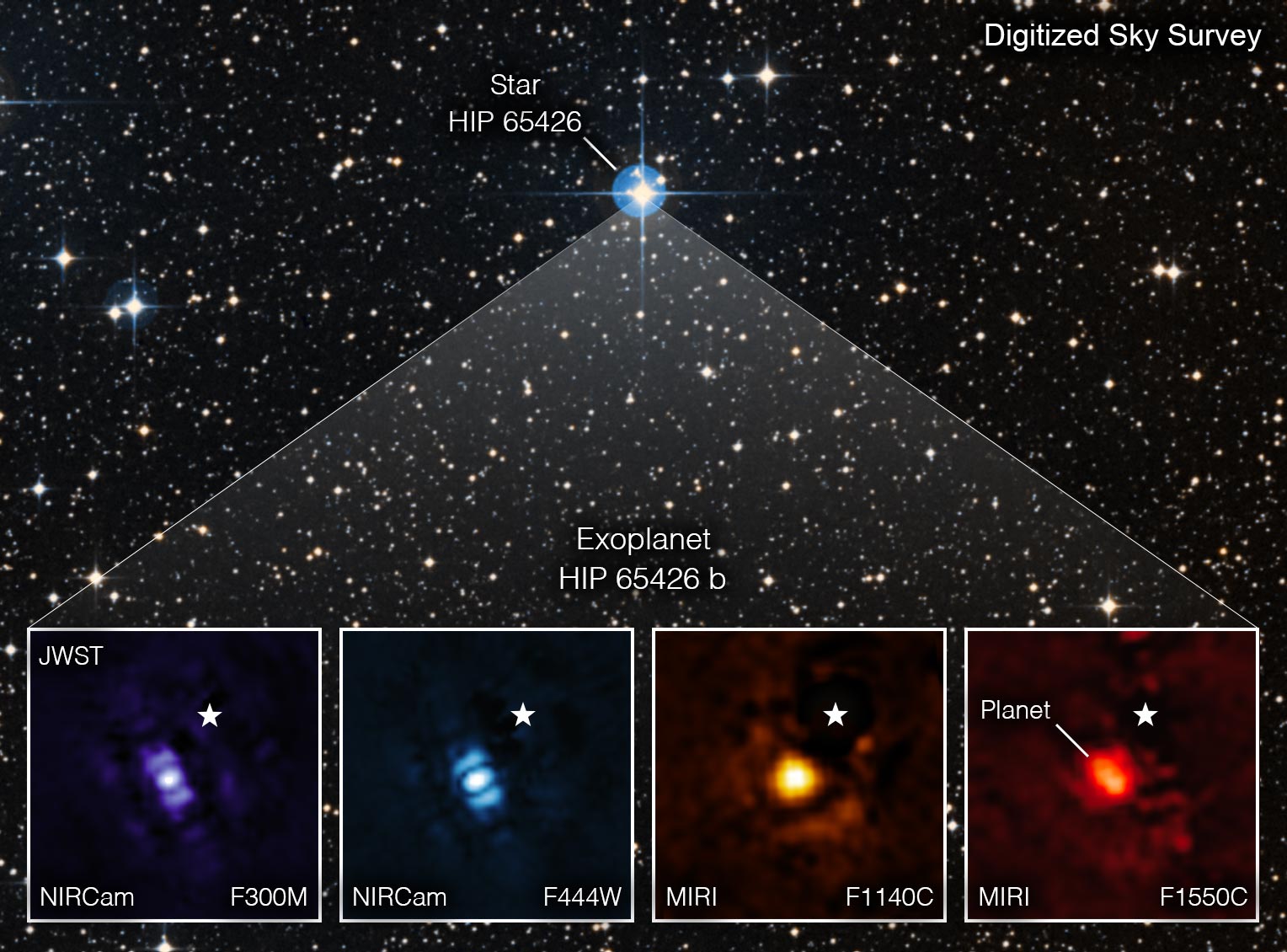Elizabeth Landau (NASA) writes:
For the first time ever, astronomers used NASA’s James Webb Space Telescope to take a direct image of a planet outside our solar system. The exoplanet, called HIP 65426 b, is a gas giant. This means it has no rocky surface and could not be habitable.

As seen through four different light filters, the image shows how Webb’s powerful infrared vision can easily capture worlds beyond our solar system. It paves the way for future observations that will reveal more information than ever before about exoplanets.
“This is a transformative moment, not only for Webb but also for astronomy generally,” said Sasha Hinkley, associate professor of physics and astronomy at the University of Exeter in the United Kingdom, who led these observations with a large international collaboration. An international mission, the James Webb Space Telescope is led by NASA in collaboration with its partners, ESA (European Space Agency) and CSA (Canadian Space Agency).
The exoplanet in Webb’s image, HIP 65426 b, is about six to 12 times the mass of Jupiter. With these observations, astronomers could help narrow that down that range even further. It is young as far as planets go — about 15 to 20 million years old, compared to our 4.5-billion-year-old Earth.
Because HIP 65426 b is about 100 times farther from its host star than Earth is from the Sun, it is sufficiently distant from the star that Webb can easily separate the planet from the star in the image.
Webb’s Near-Infrared Camera (NIRCam) and Mid-Infrared Instrument (MIRI) are both equipped with coronagraphs. These are sets of tiny masks that block out starlight, enabling Webb to take direct images of certain exoplanets like this one.
“It was really impressive how well the Webb coronagraphs worked to suppress the light of the host star,” Hinkley said.
Because stars are so much brighter than planets, taking direct images of exoplanets is challenging. In fact, the HIP 65426 b planet is more than 10,000 times fainter than its host star in the near-infrared, and a few thousand times fainter in the mid-infrared.
In each of the filtered images, the planet appears as a slightly differently shaped blob of light. That’s because of the particulars of Webb’s optical system and how it translates light through the different optics.
“Obtaining this image felt like digging for space treasure,” said Aarynn Carter. He is a postdoctoral researcher at the University of California, Santa Cruz, and led the analysis of the images. “At first all I could see was light from the star, but with careful image processing I was able to remove that light and uncover the planet.”
Although this is not the first direct image of an exoplanet taken from space – the Hubble Space Telescope has captured direct exoplanet images previously – HIP 65426 b points the way forward for Webb’s exoplanet exploration.
“I think what’s most exciting is that we’ve only just begun,” Carter said. “There are many more images of exoplanets to come that will shape our overall understanding of their physics, chemistry, and formation. We may even discover previously unknown planets, too.”
SciTech Daily